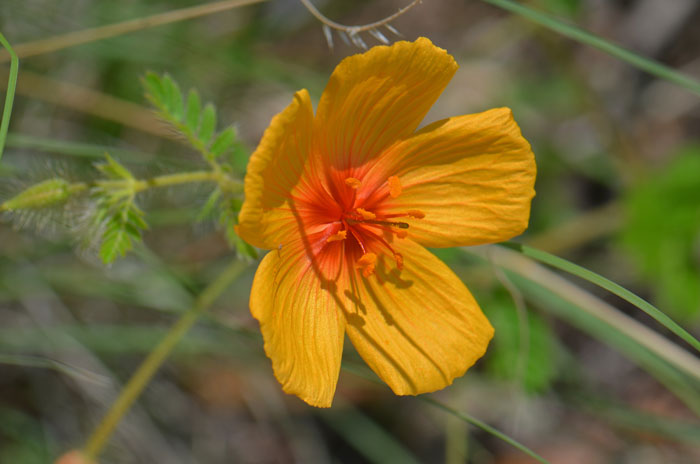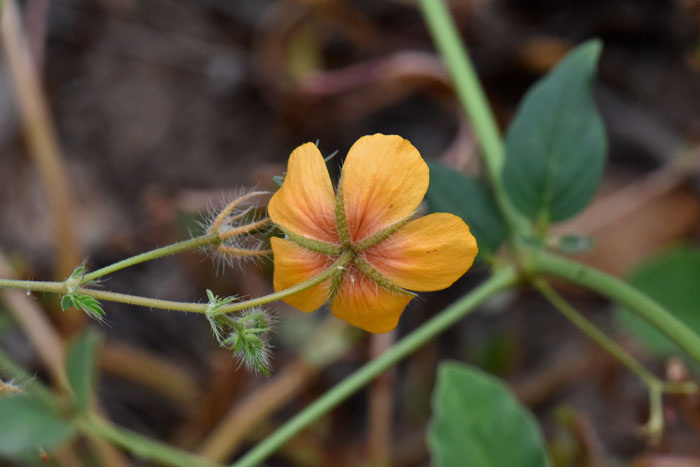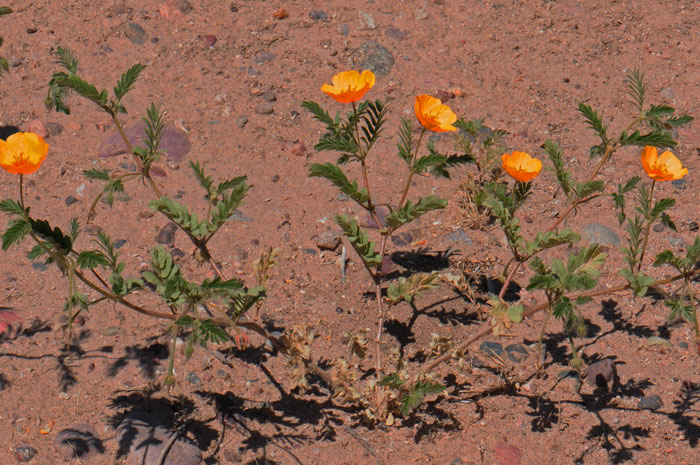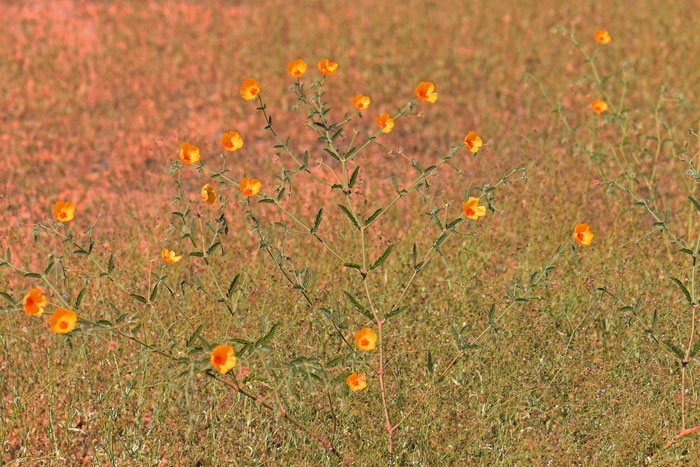Kallstroemia grandiflora, Arizona Poppy




Scientific Name: Kallstroemia grandiflora
Common Name: Arizona Poppy
Also Called: Arizona Poppy, Desert Poppy, Mexican Poppy, Orange Caltrop, Summer Poppy (Spanish: Baiburín, Baiborín, Mal de Ojo, Vaivurín)
Family: Zygophyllaceae, Caltrop Family
Synonyms: (Kallstroemia grandiflora var. arizonica, Kallstroemia grandiflora var. detonsa, Tribulus grandiflorus)
Status: Native
Duration: Annual
Size: 2 to 3 tall more or less and may by found in clumps up to 5 feet wide with excellent rainfall.
Growth Form: Forb/herb; plants decumbent to ascending; stems quite hairy, hirsute-hispid and other hairs pilose.
Leaves: Green; opposite; pinnately compound; stipules present; 5-16 leaflets; fruit ovoid.
Flower Color: Orange, deep orange; flowers can get up to 2½ inches on large well watered plants; flowers solitary in axils.
Flowering Season: February to September; September to October in California and July to September in Texas.
Elevation: Below 5,000 feet; up to 3,000 feet in California.
Habitat Preferences: Common open plains and mesas; uncommon in California along sandy roadsides and sandy deserts, plains and mesas below 5000 ft in Texas.
Recorded Range: Kallstroemia grandiflora is found in the southwestern United States in AZ, CA, NM, TX. It is also native to Mexico, few records in Baja California. In Arizona it is found Yavapai, Maricopa and Yuma counties, and in the southern part of the state and in Greenlee County.
North America & US County Distribution Map for Kallstroemia grandiflora.
U.S. Weed Information: No information available.
Invasive/Noxious Weed Information: No information available.
Wetland Indicator: No information available.
Threatened/Endangered Information: No information available.
In the Southwestern United States: Arizona and New Mexico each have 4 species of Kallstroemia, California has 3 species, Nevada and Utah each have 2 species, Texas has 6 species. All data is approximate and subject to taxonomic changes.
Comments: In years with good winter or mid-summer rainfall Arizona Poppy can become quite prolific with deep orange flowers.
The type from along the Gila River, Arizona (Emory). The deep orange flowers of Kallstroemia grandiflora superficially resemble those the California Poppy (Eschscholtzia californica) and thus the common name Arizona Poppy.

